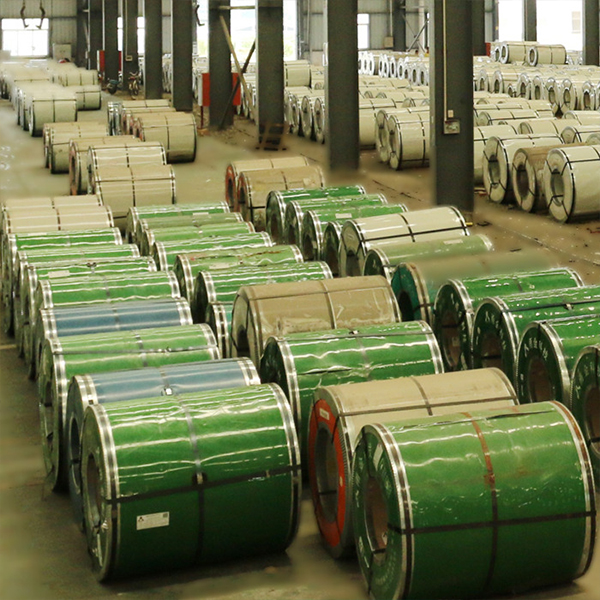304L Stainless Steel Sheet Coil SUS ASTM 0.5mm 1.5mm 2.0mm Thick
Characteristics
304L is a lower carbon variant of 304 stainless steel used where welding is required. The lower carbon content minimizes carbide precipitation in the heat-affected zone near the weld, which can lead to intergranular corrosion (weld erosion) of stainless steel in some environments.
The carbon content of 304L (UNS 30403) is restricted to a maximum of 0.03%, which prevents sensitization during welding. Sensitization is the formation of chromium carbides along grain boundaries when a stainless steel is exposed to temperatures in the approximate range range of 900–1500 ℉(480–820℃). The subsequent formation of chromium carbide results in reduced corrosion resistance along the grain boundary leaving the stainless steel susceptible to unanticipated corrosion in an environment where 304 would be expected to be corrosion resistant. This grain boundary corrosive attack is known as intergranular corrosion.
Chemical Analysis Weight %
(all values are maximum unless a range is otherwise indicated)
| Element | 304L |
| Chromium | 18.0 min.-20.0 max. |
| Nickel | 8.0 min.-12.0 max. |
| Carbon | 0.030 |
| Manganese | 2.00 |
| Phosphorus | 0.045 |
| Sulfer | 0.030 |
| Silicon | 0.75 |
| Nitrogen | 0.10 |
| Iron | Balance |
Surface Finishes
304L stainless steel coil is used in many industries. Many manufacturers are in fact, utilizing surface finishes for 304L stainless steel coil to achieve different results. If you are unfamiliar with surface finishes for 304L stainless steel coil, then this guide is for you.
Sometimes specified as “Bright Annealed Stainless Steel”, is a bright, cold-rolled, reflective finish retained by final annealing in a controlled atmosphere furnace. It is highly reflective and has the same appearance as a mirror. A final light rolling pass through polished rolls produces a smooth, reflective surface, excellent for decorative applications.
Cold rolled, heat treated, pickled, pinch passed. The most common cold rolled mill finish. Dull grey slightly reflective finish. Can be used in this condition or frequently is the starting point for some polished finishes.
A dull finish that is produced by cold rolling followed by annealing and descaling. Used in deep drawn objects which are often polished after fabrication.
Mechanical Polishing: This process removes surface imperfections caused by grinding and other processing operations. In addition, it provides a moderate degree of luster to the surface which can be further enhanced by subsequent buffing operations using grease or oil emulsions with rouge or aluminum oxide compounds.

FAQ
304L is the ultra low carbon variant of 304 stainless. Lower carbon content is the only chemical difference between these two grades, leading 304L to perform better in corrosive environments and be easier to weld.
The lower carbon content in 304L eliminates chromium carbide precipitation caused during welding, putting 304L at lower risk for intergranular corrosion even in highly corrosive environments.


-1.jpg)
-1-150x150.jpg)
-1-150x150.jpg)
-1-150x150.jpg)
-1-150x150.jpg)
-1-150x150.jpg)

.jpg)
-1.jpg)
-1.jpg)
.jpg)




